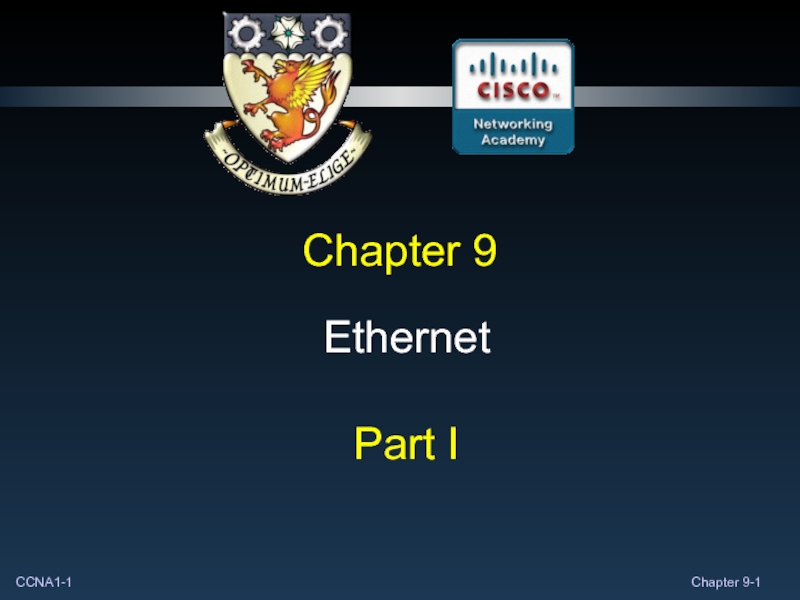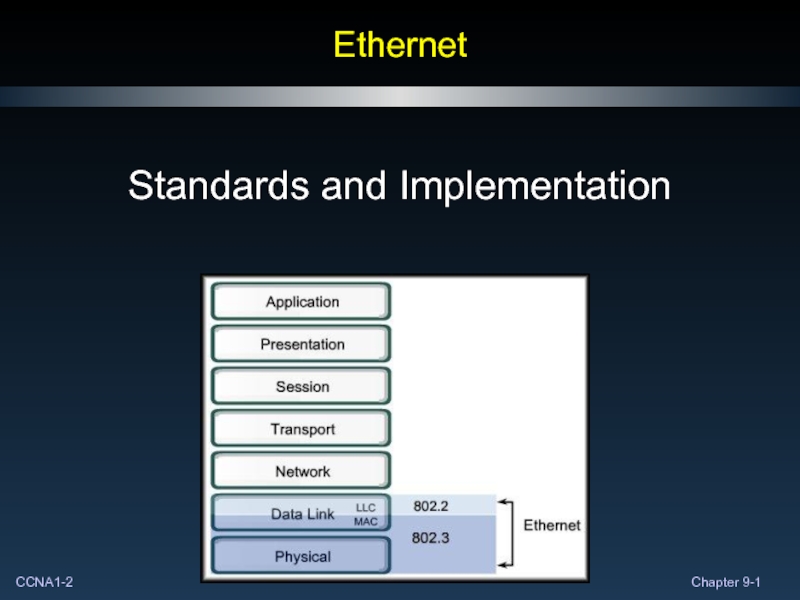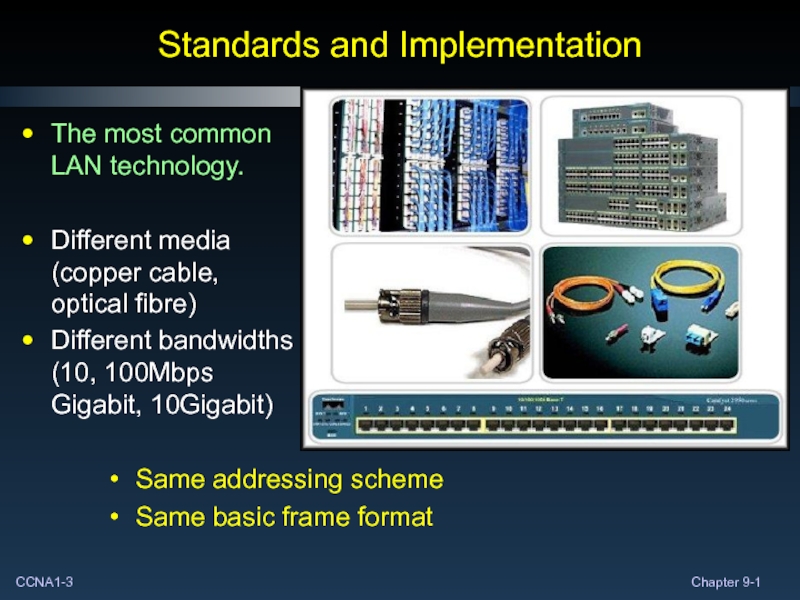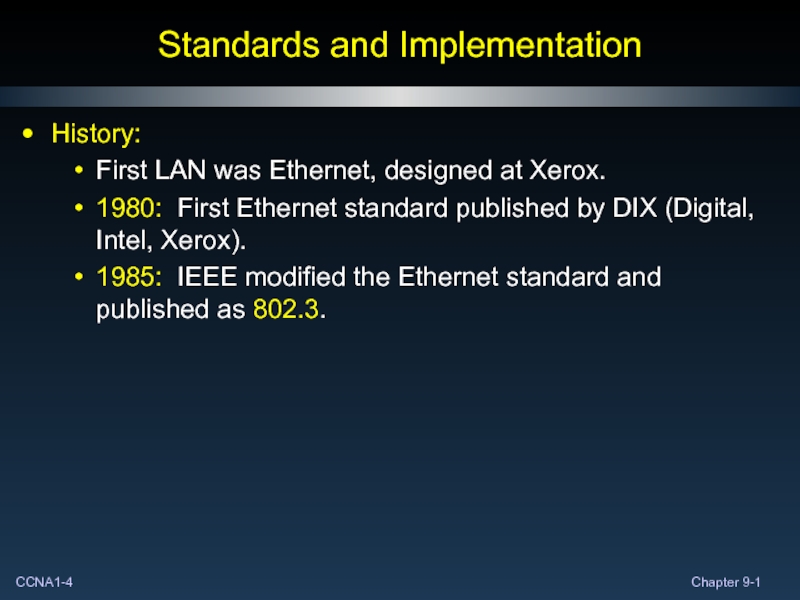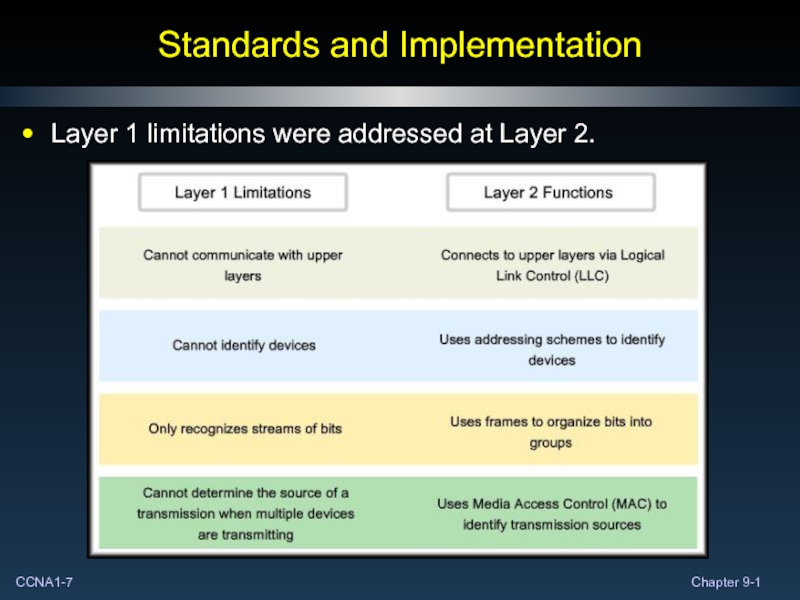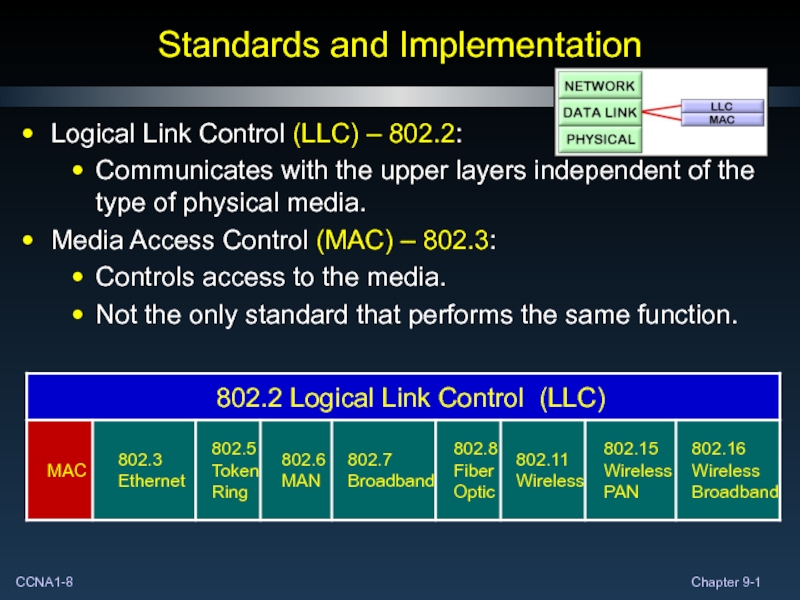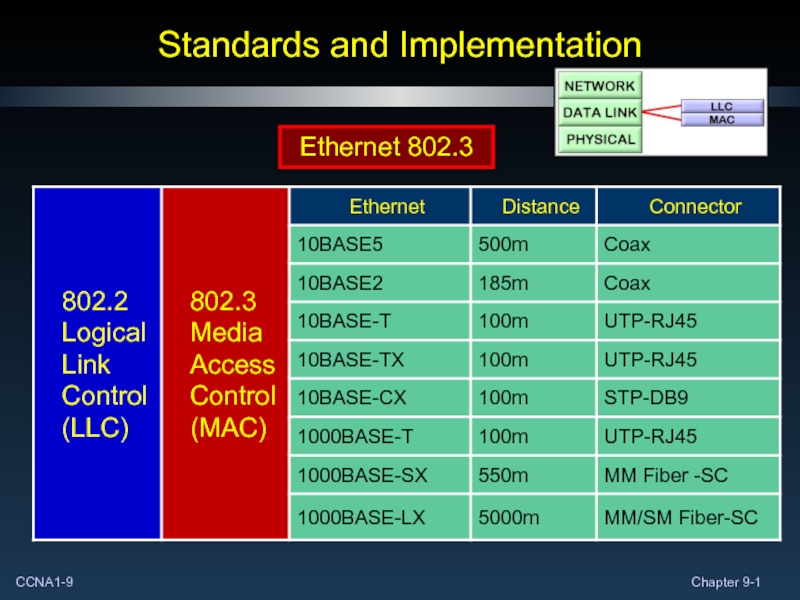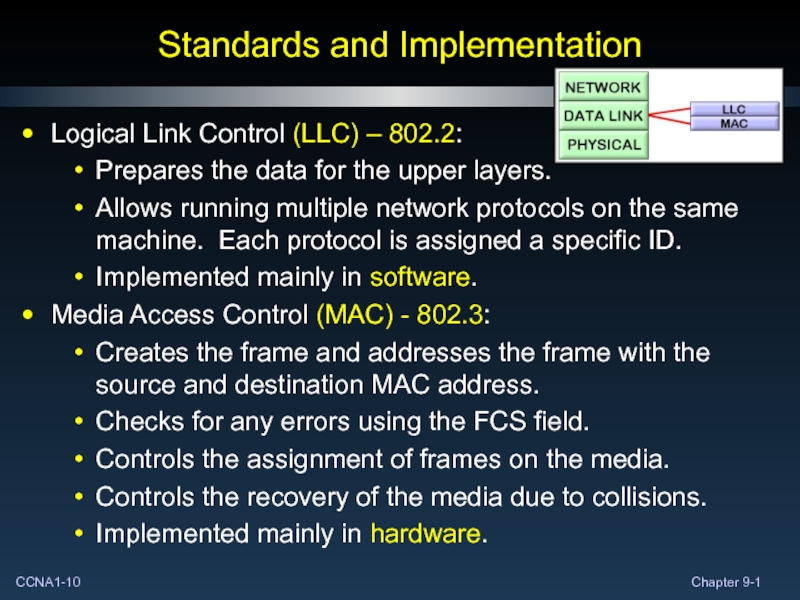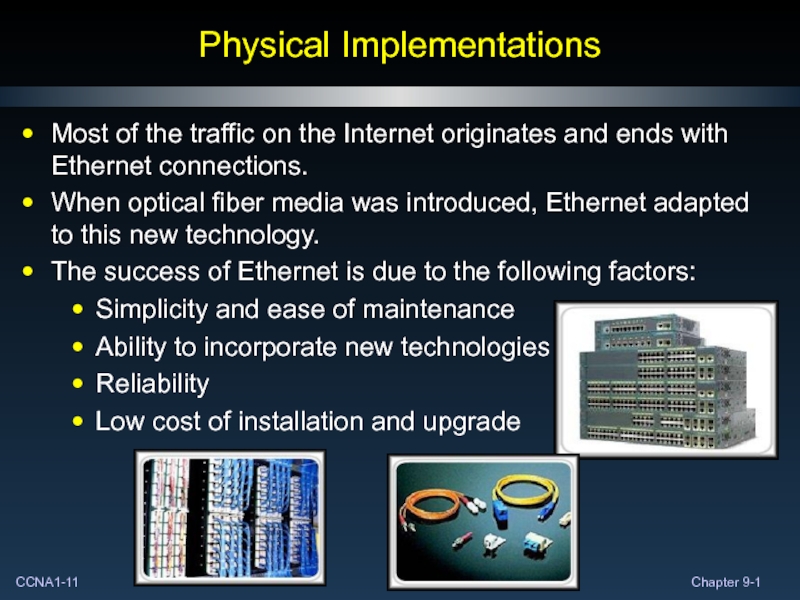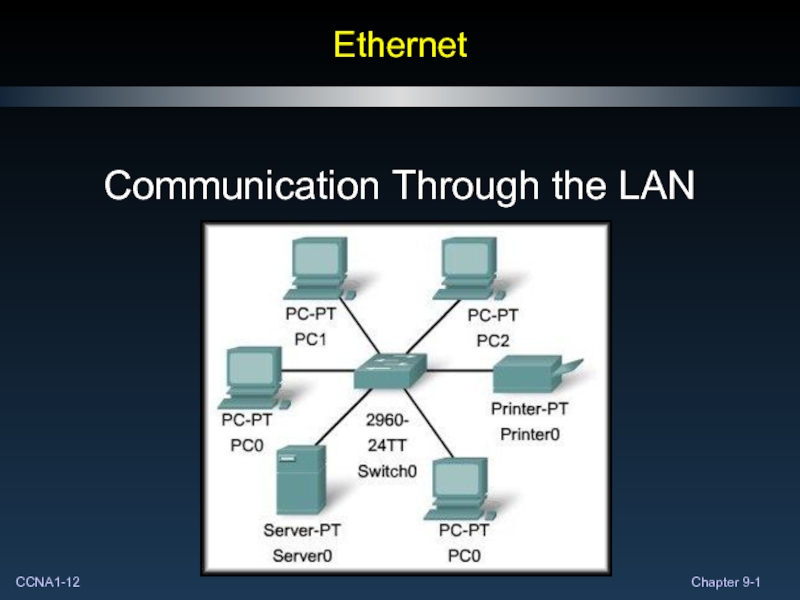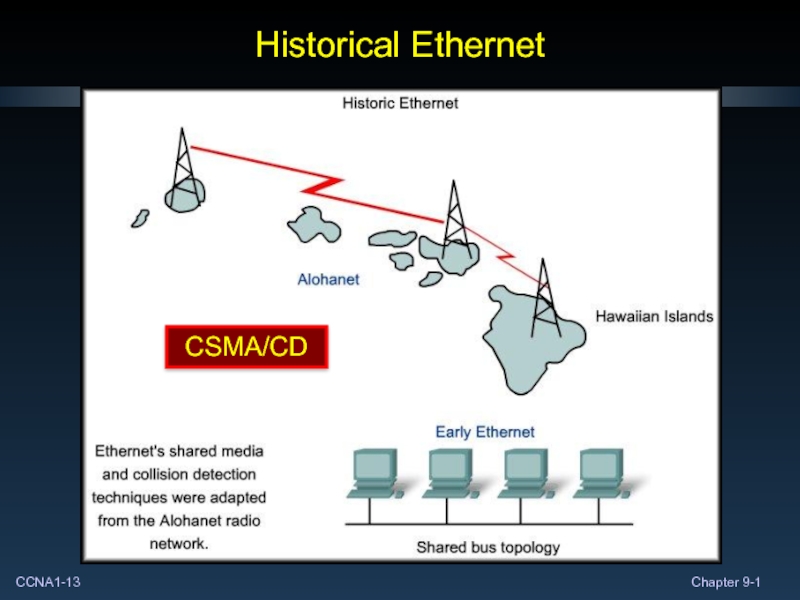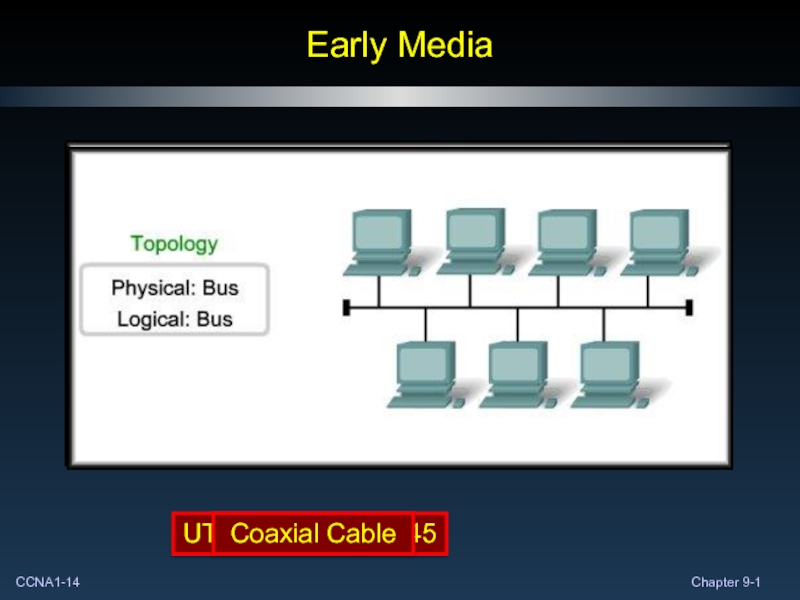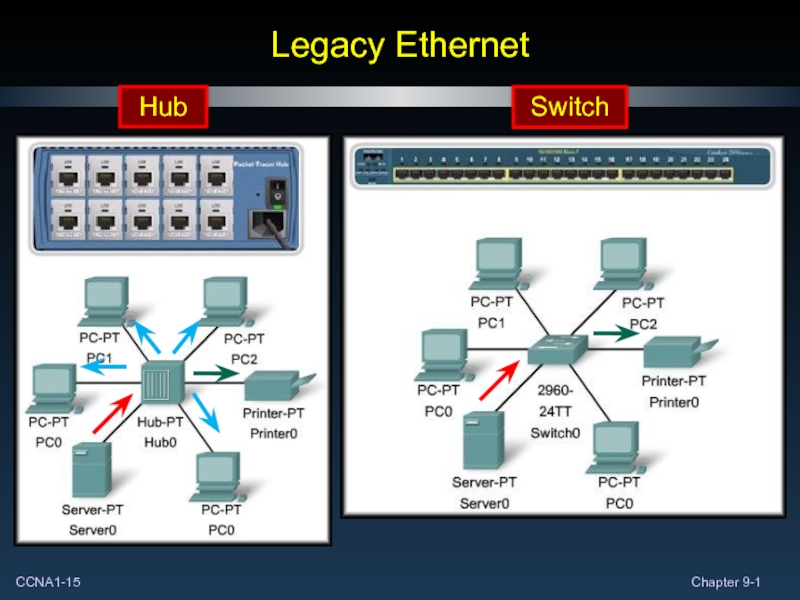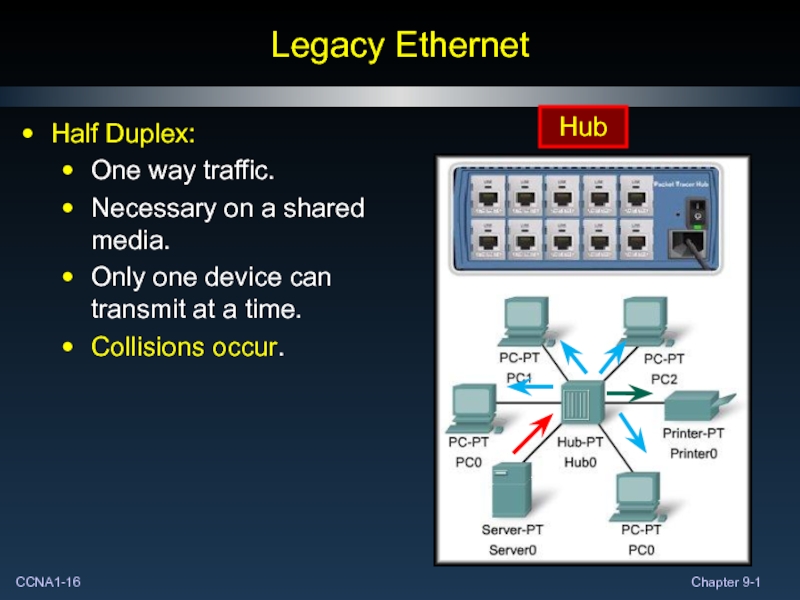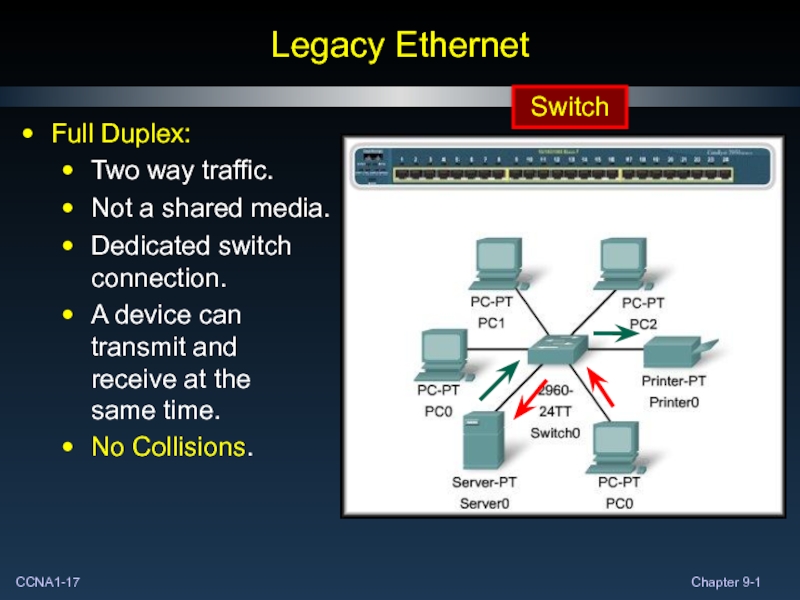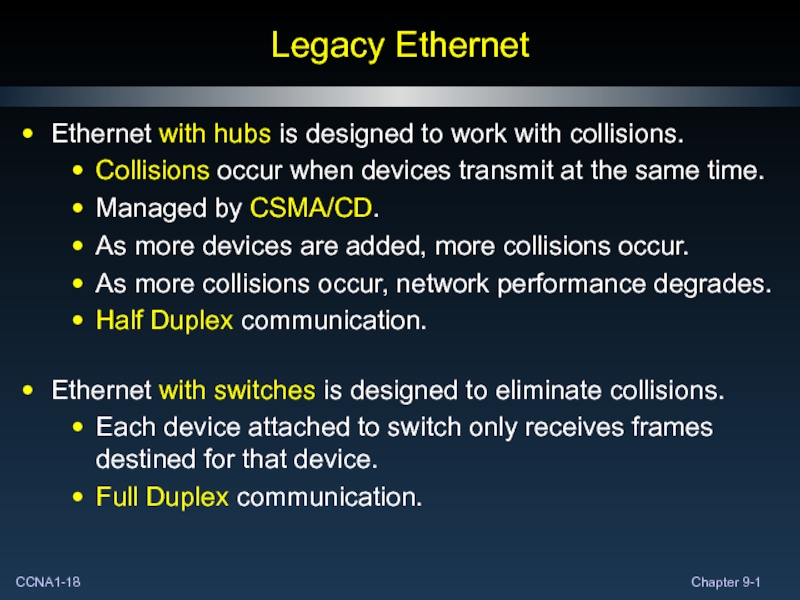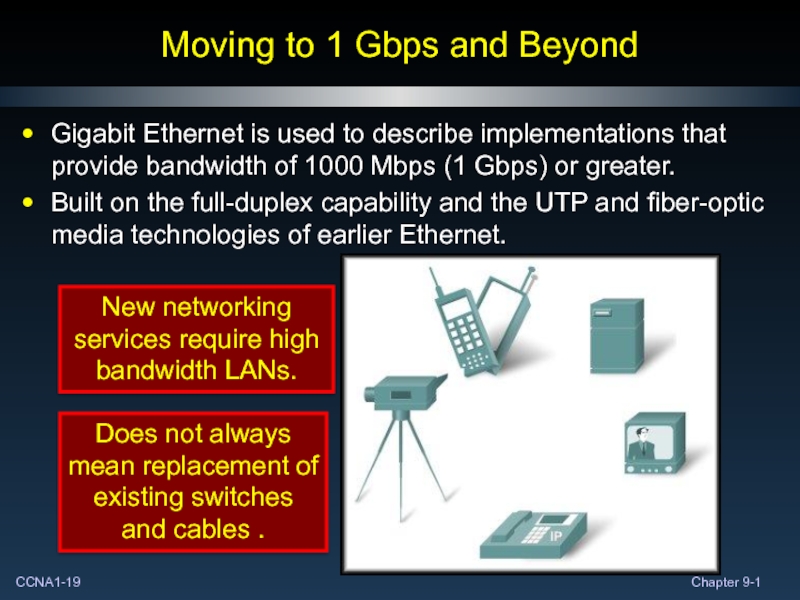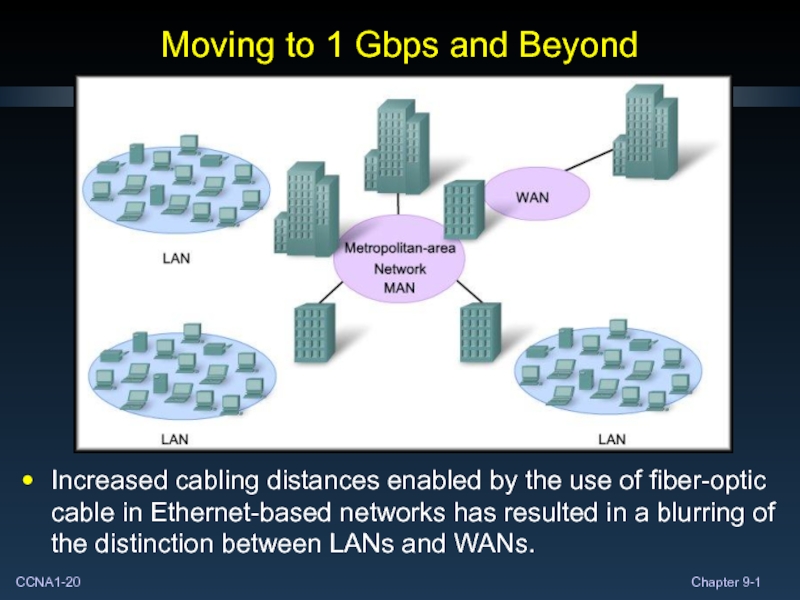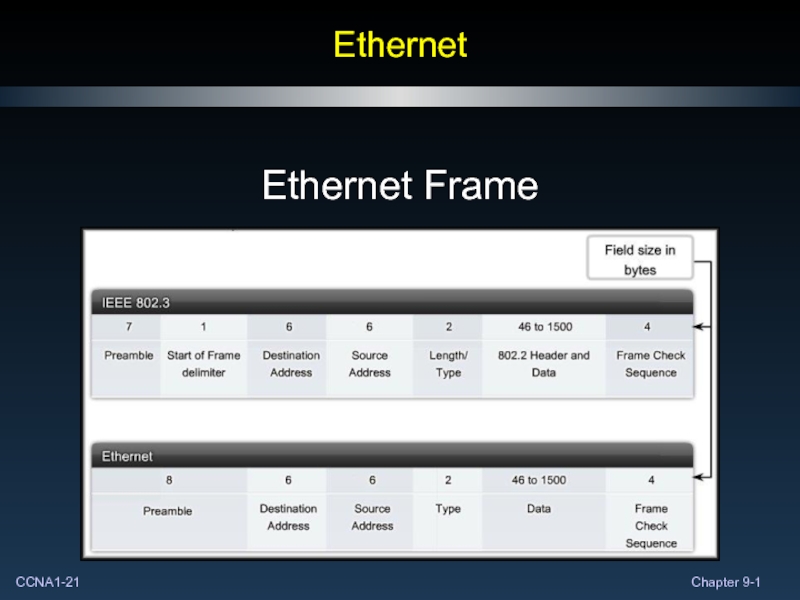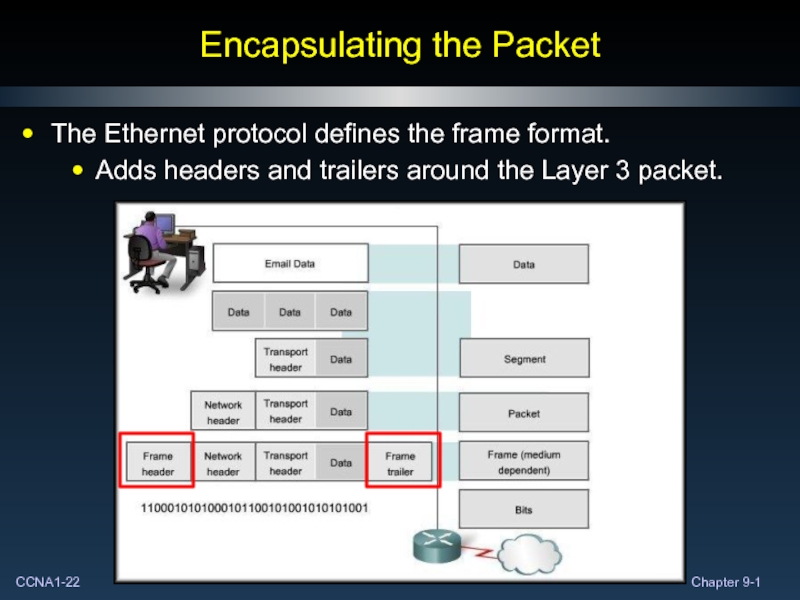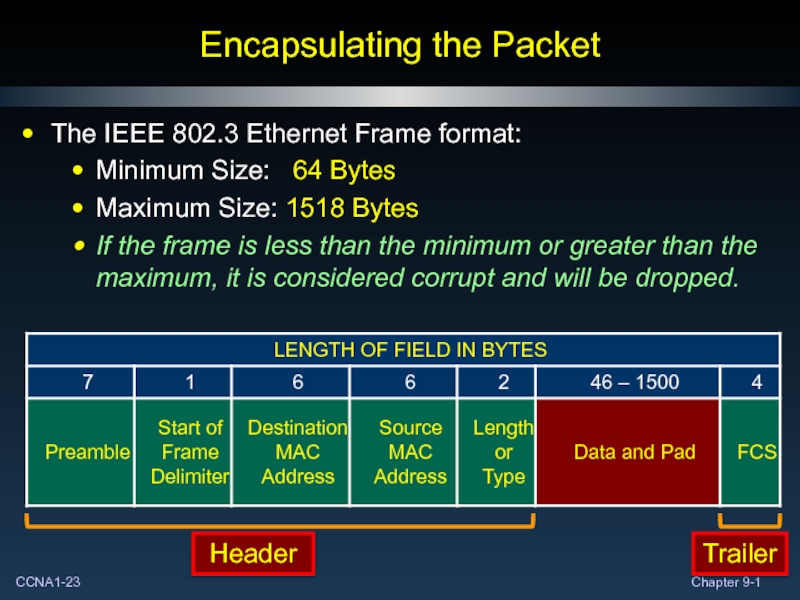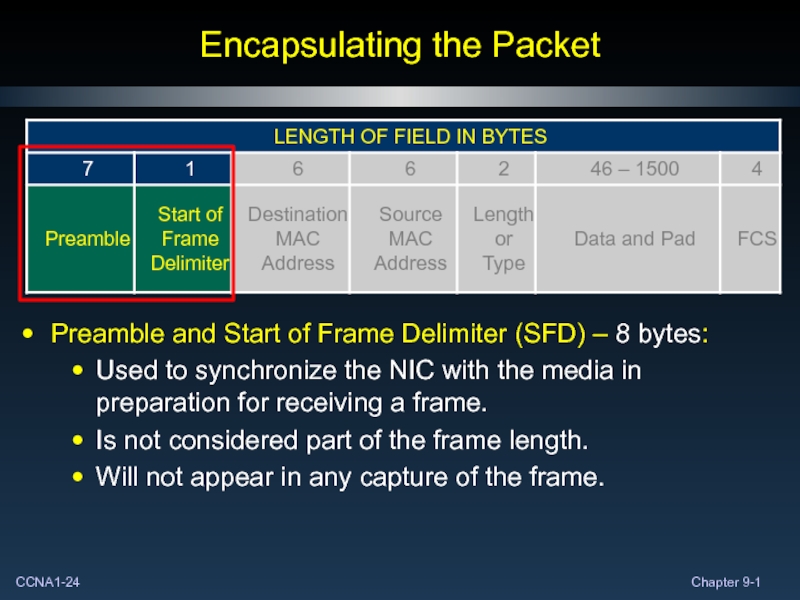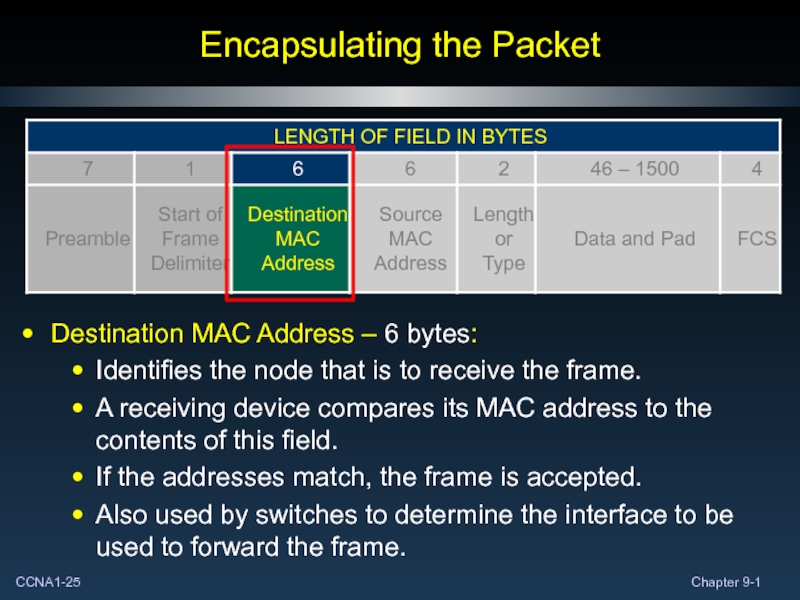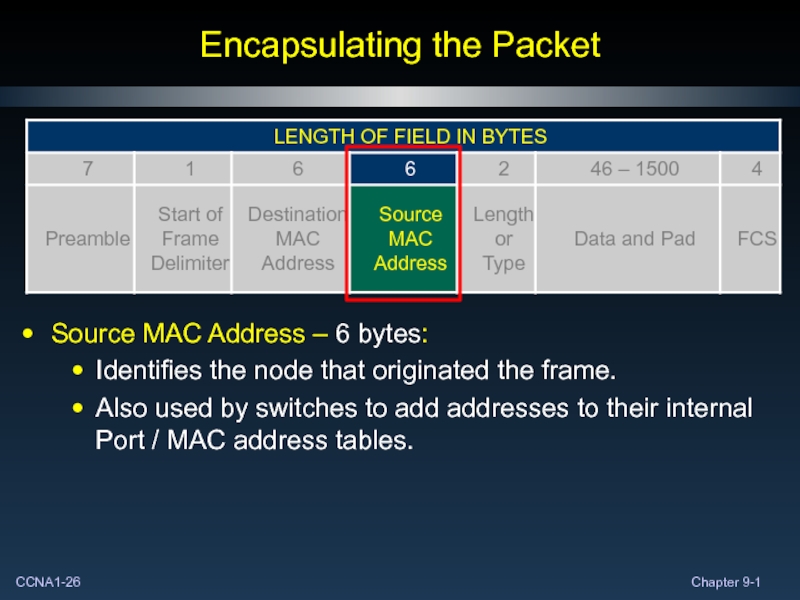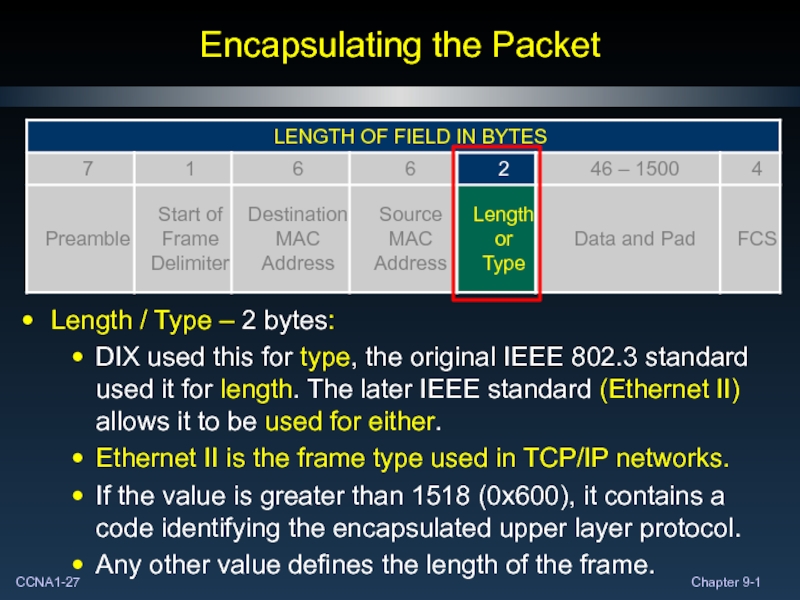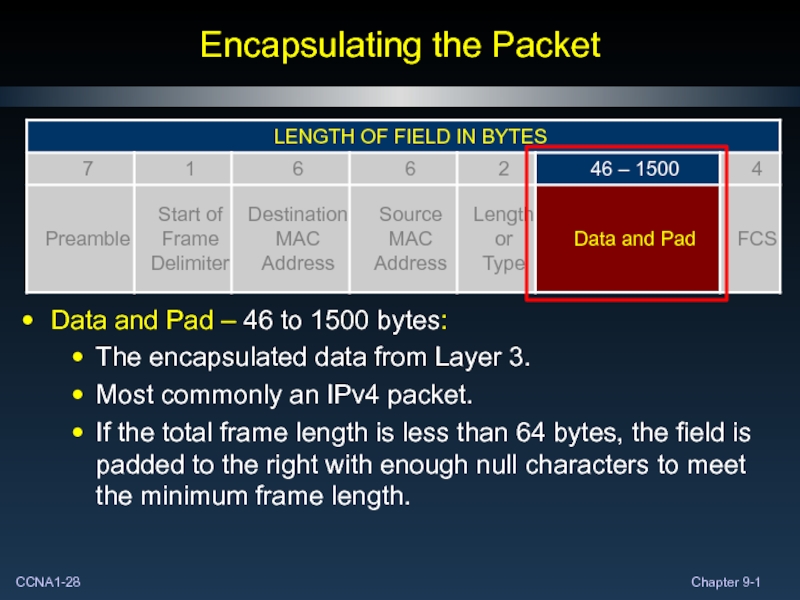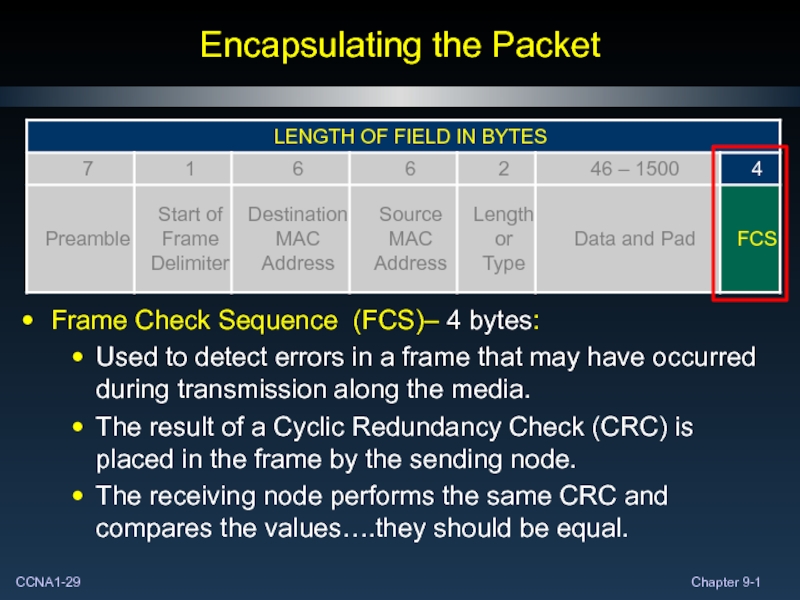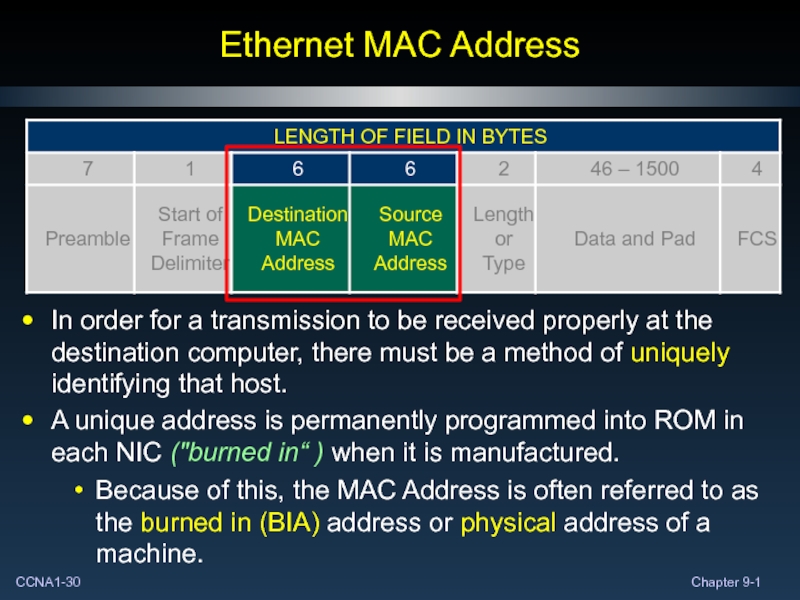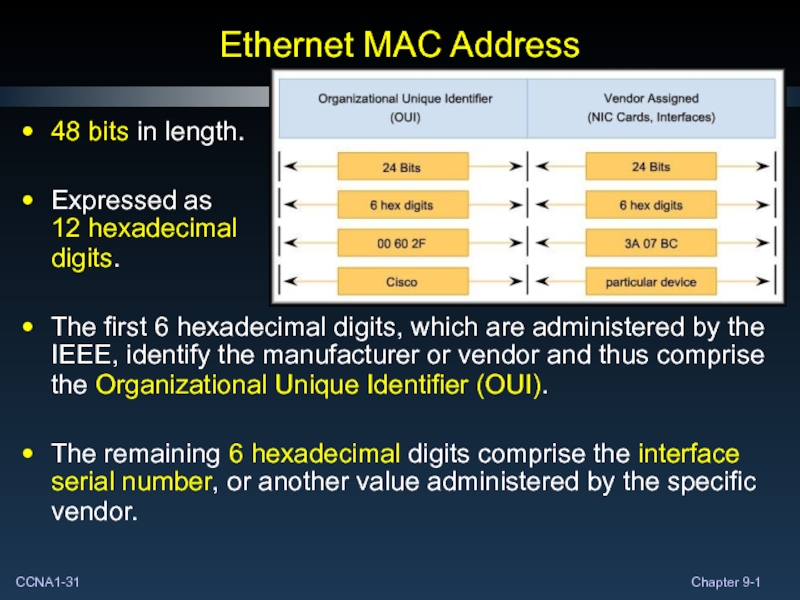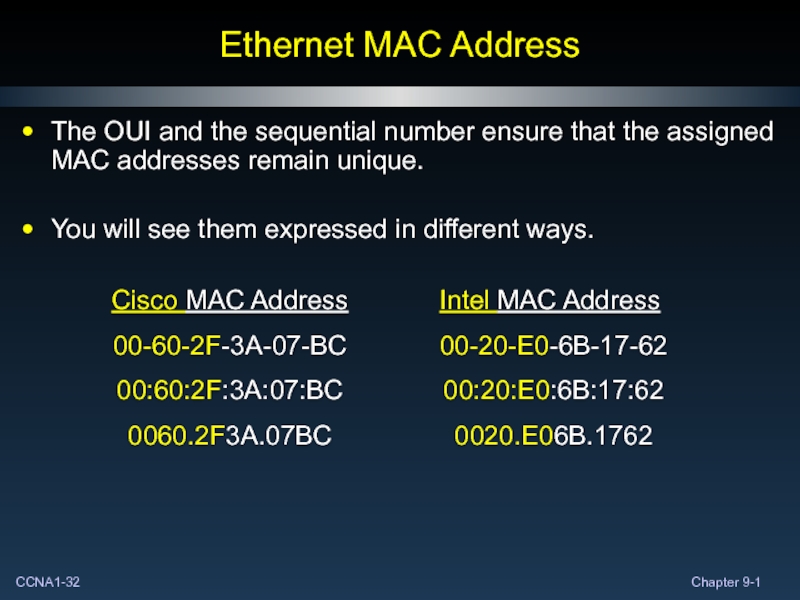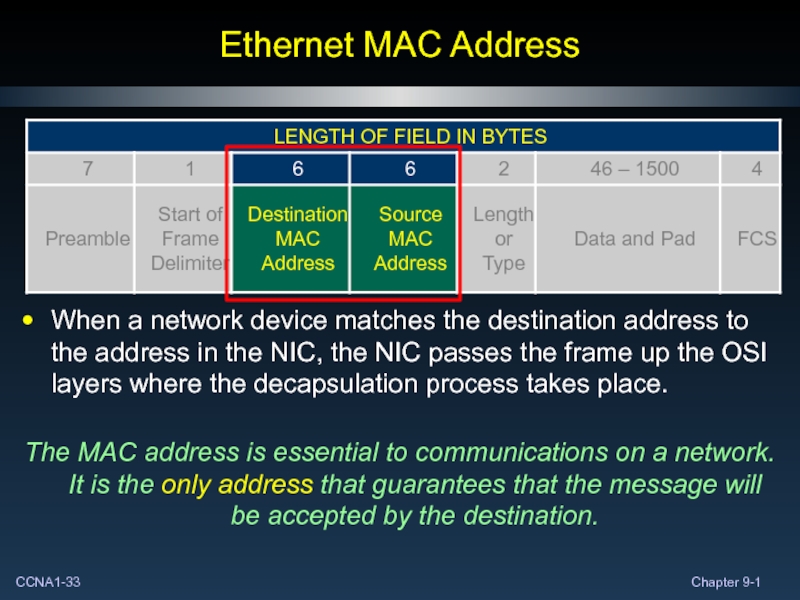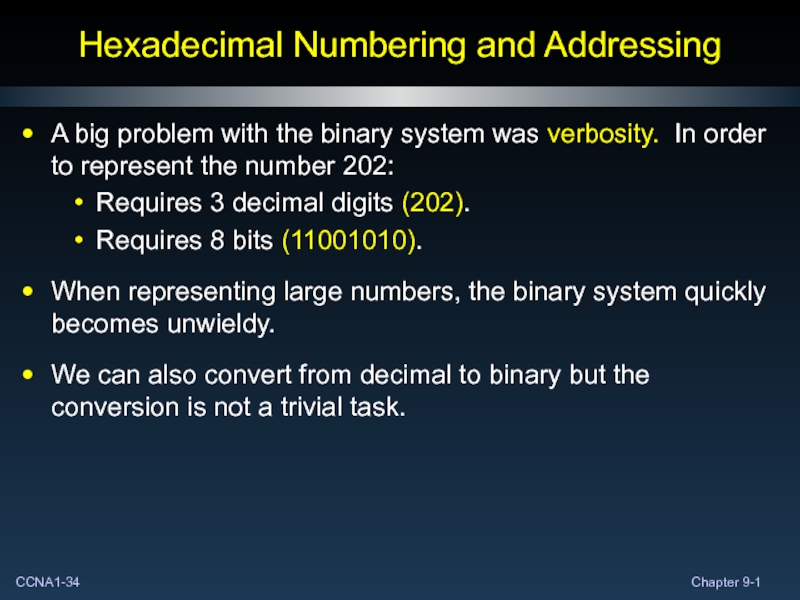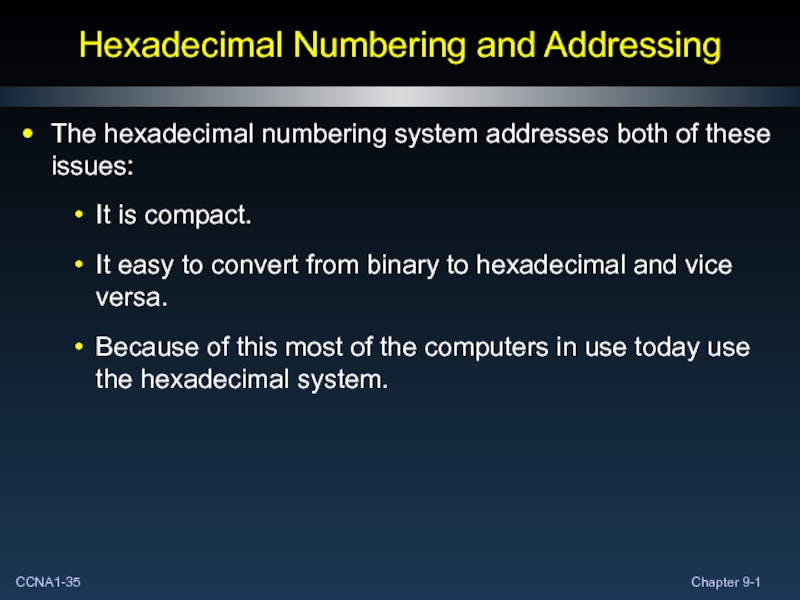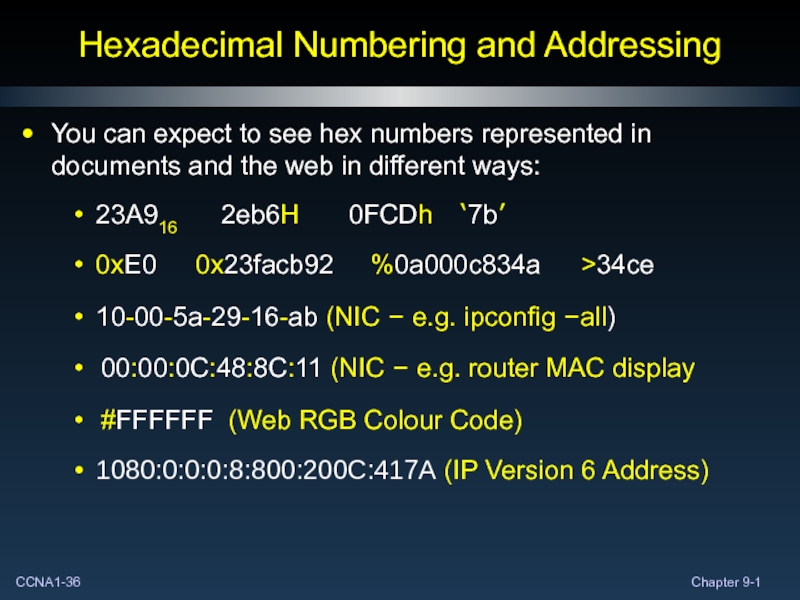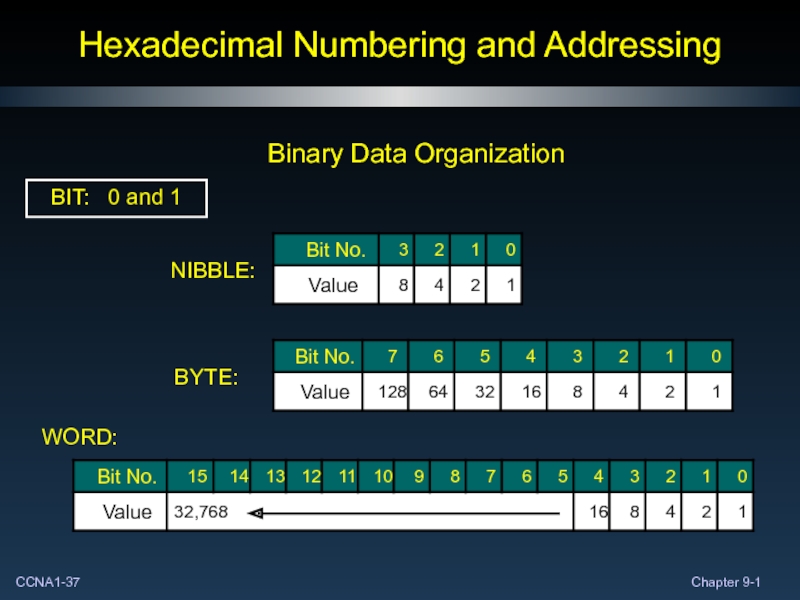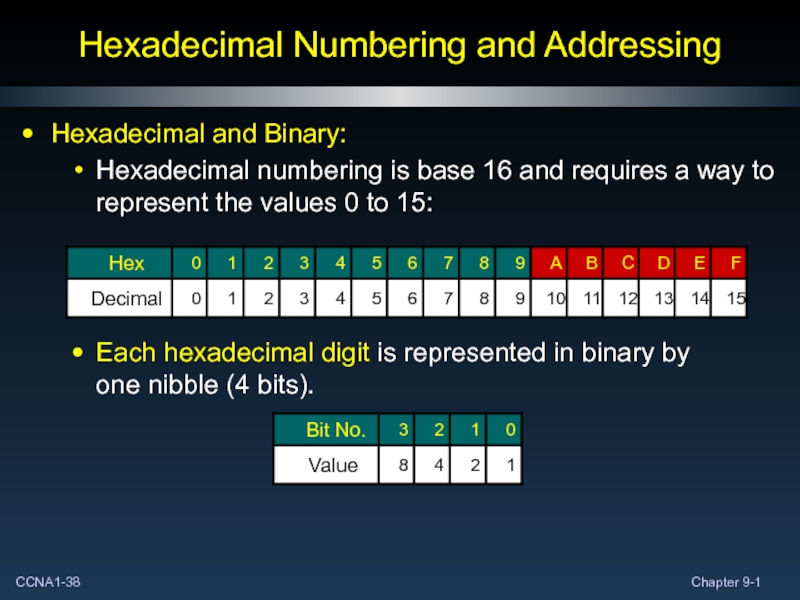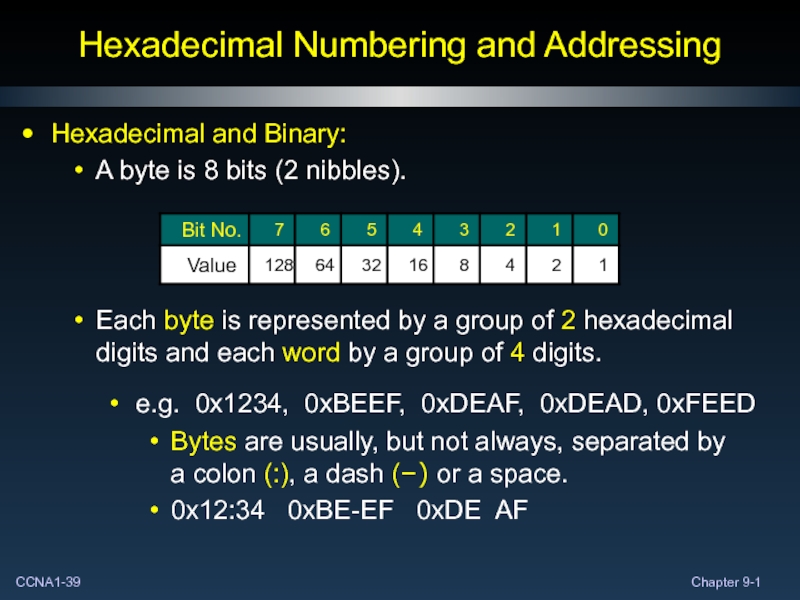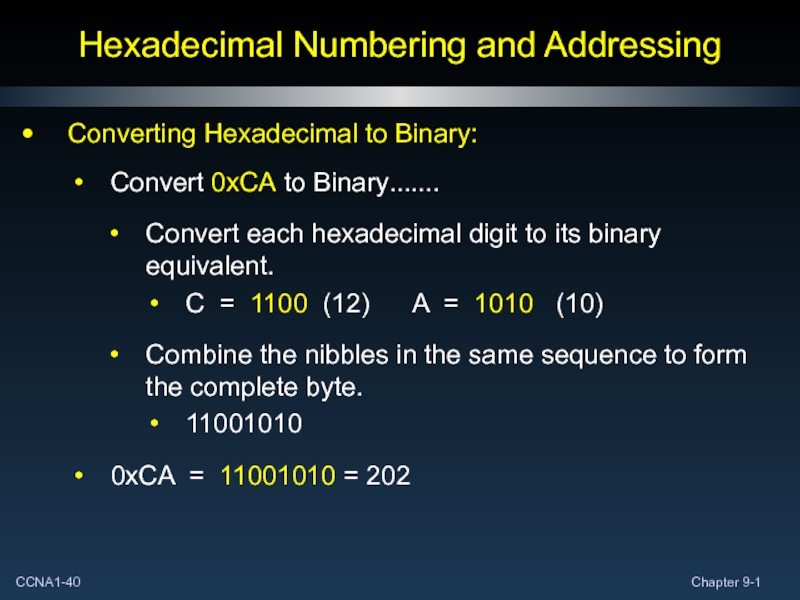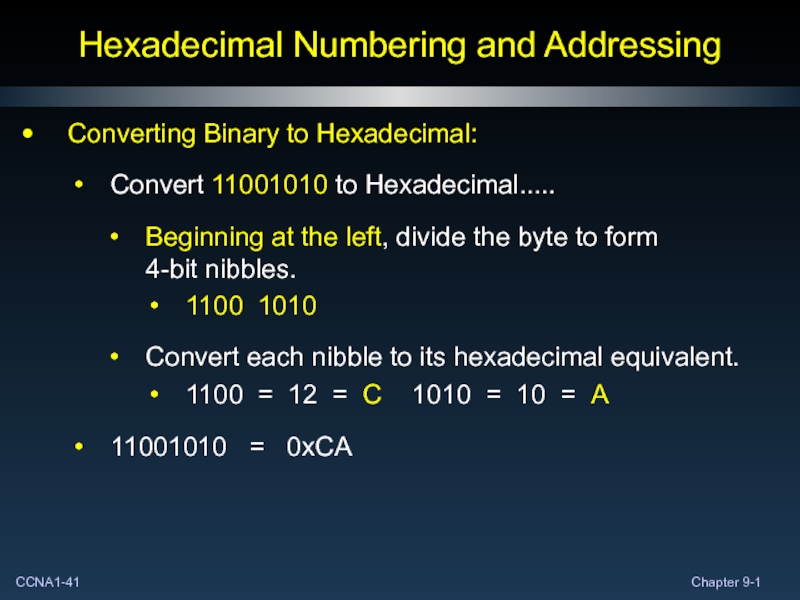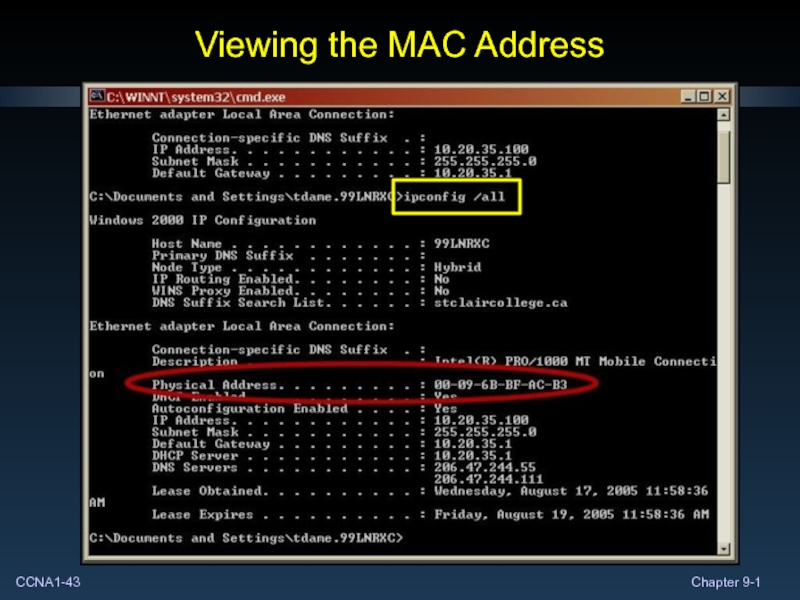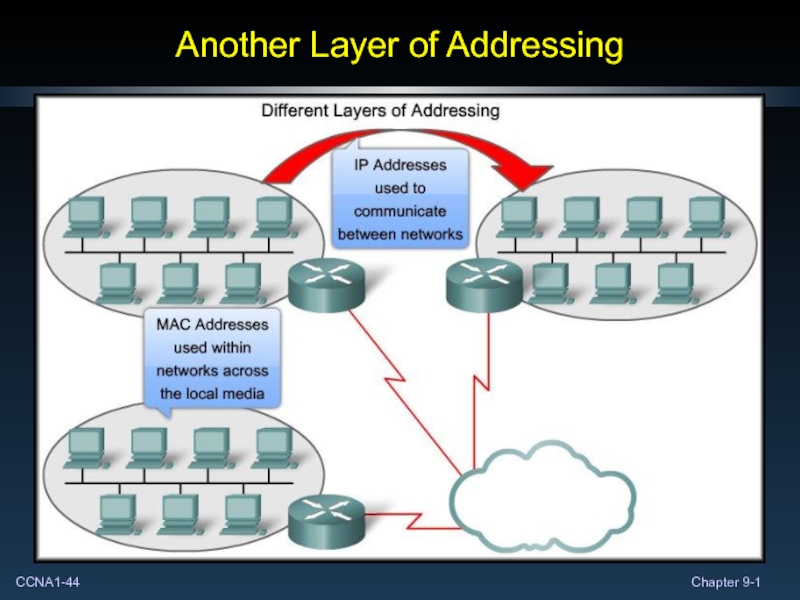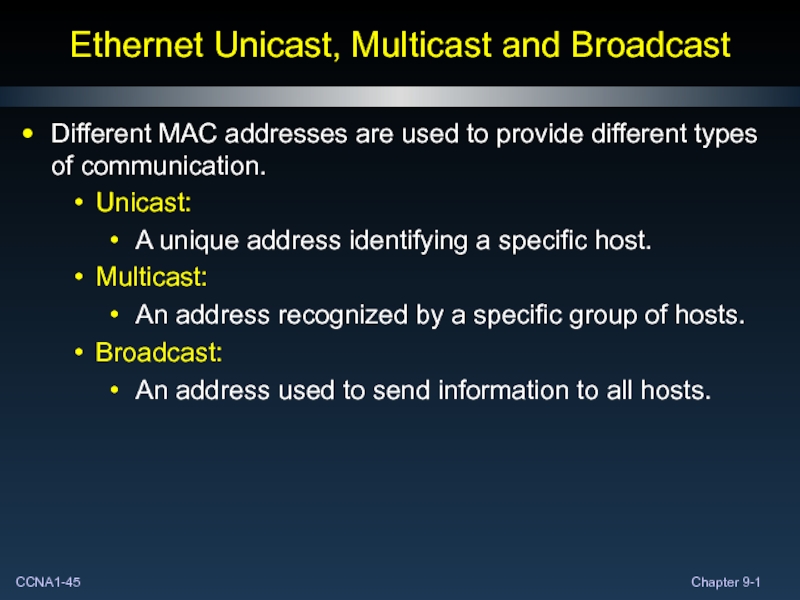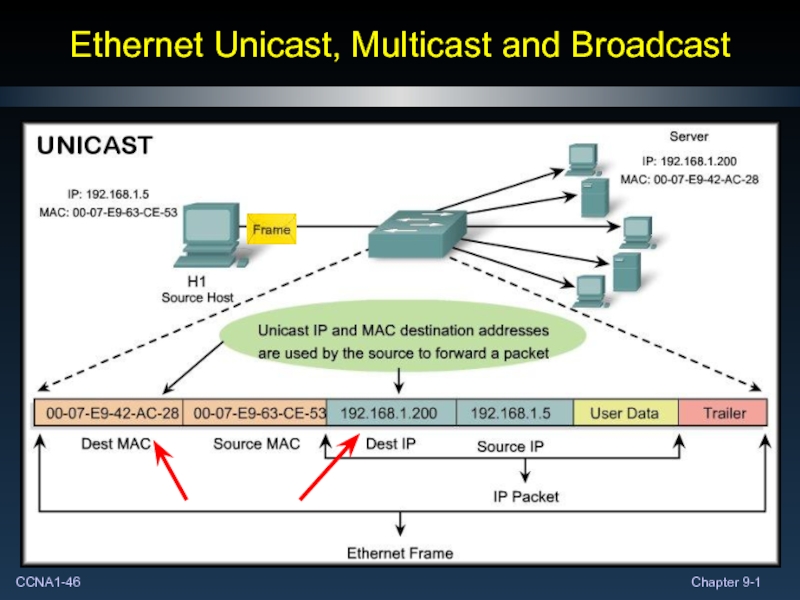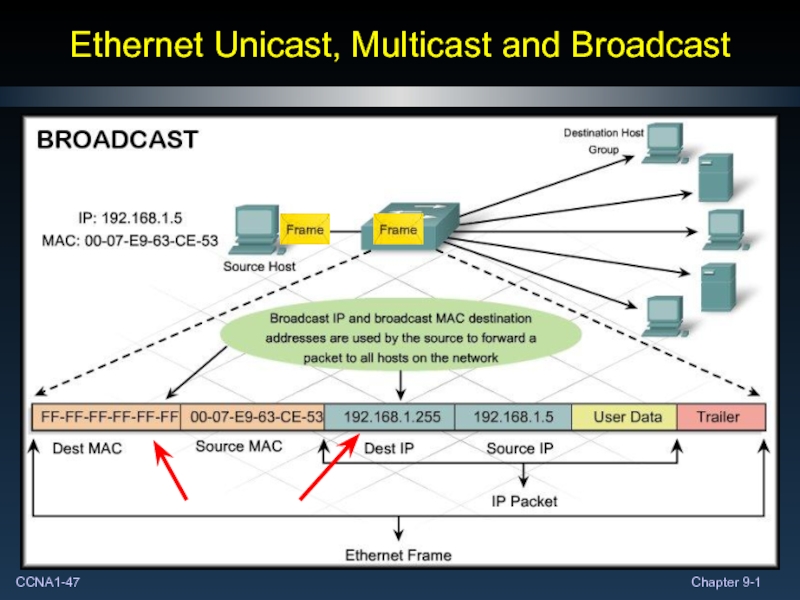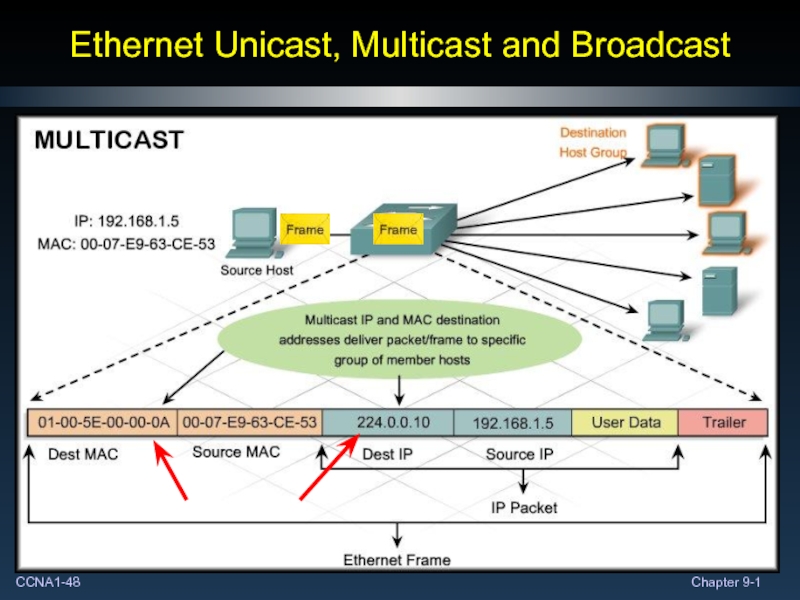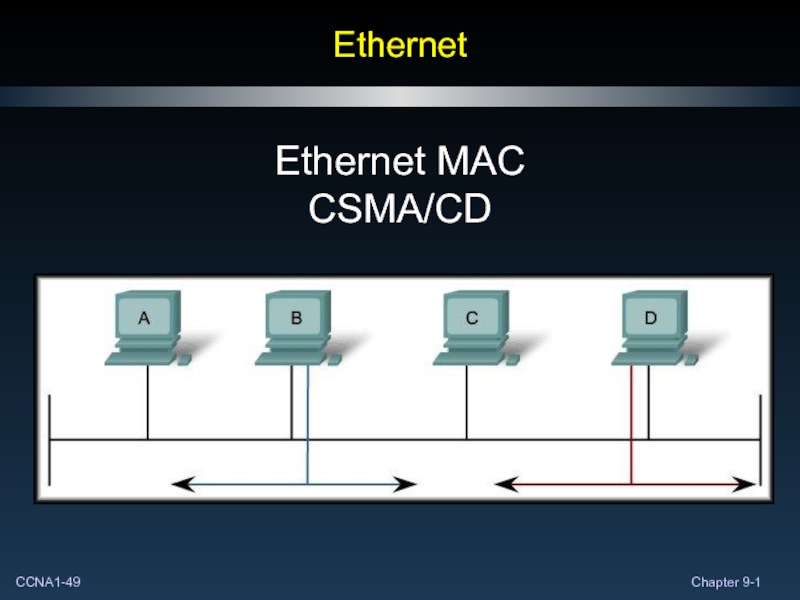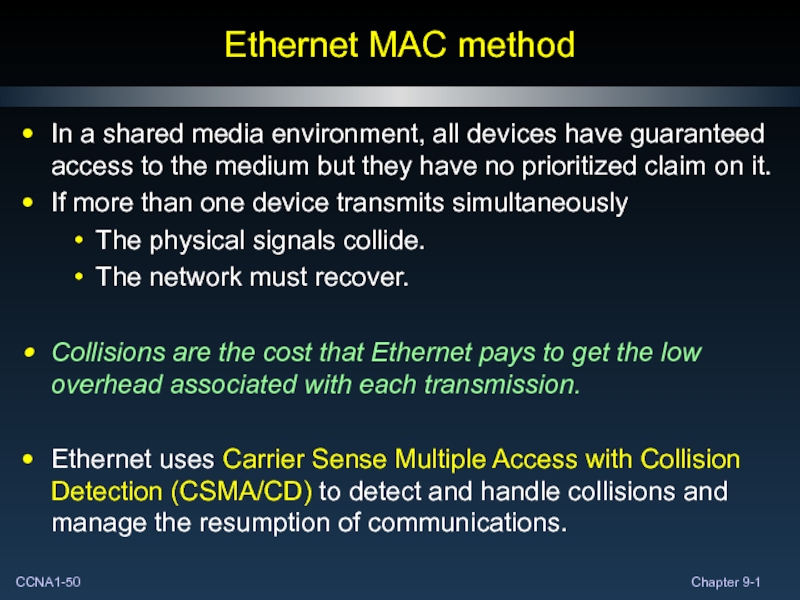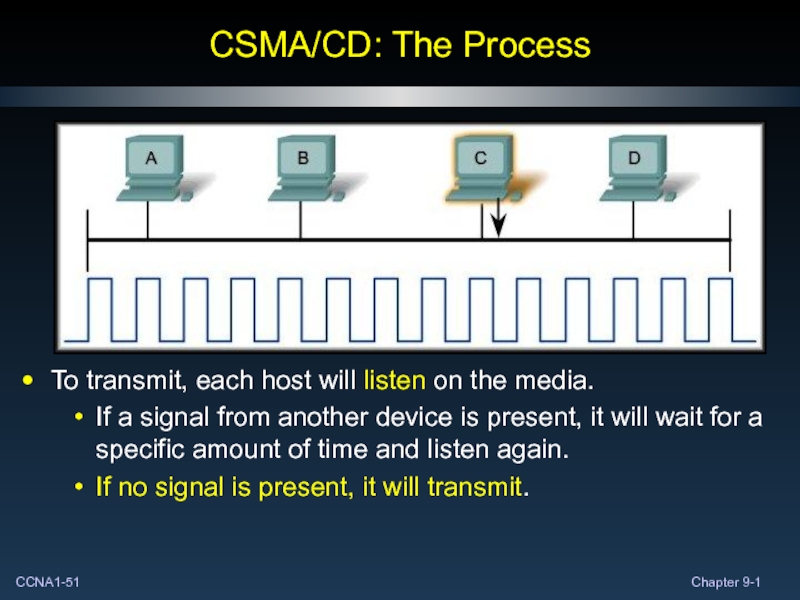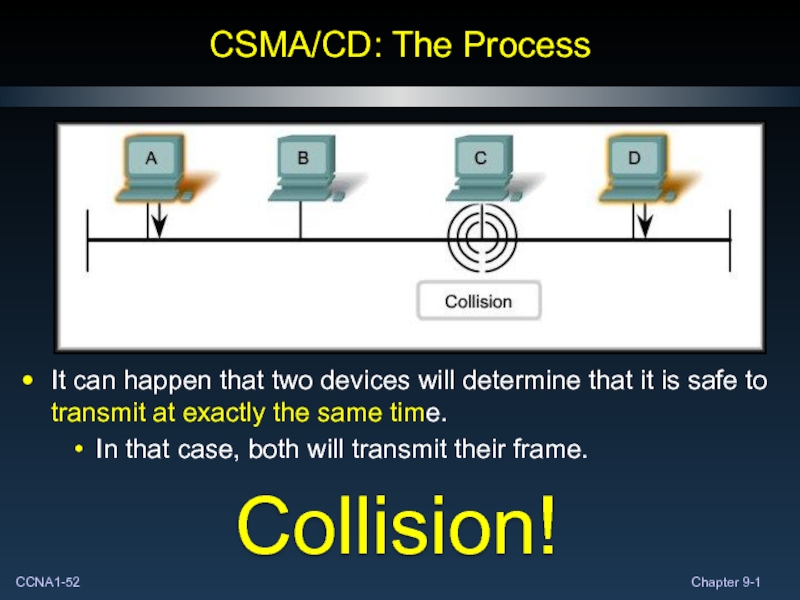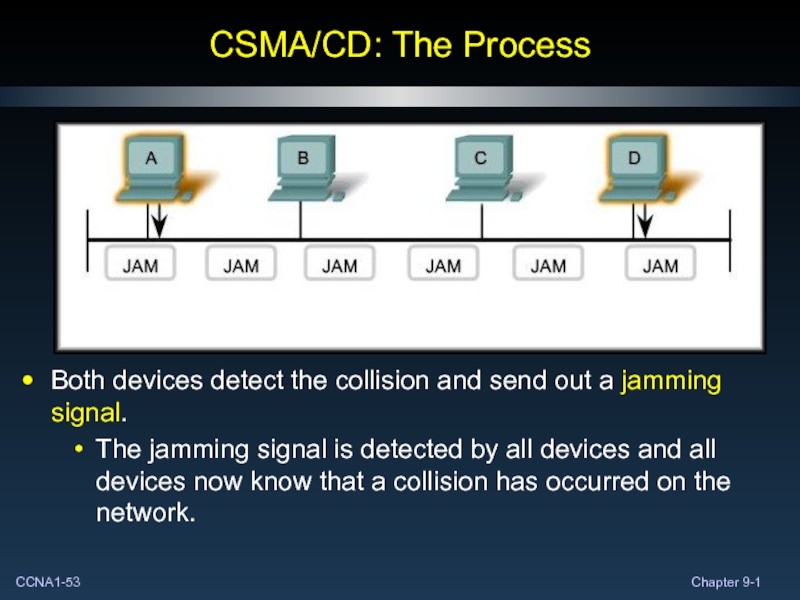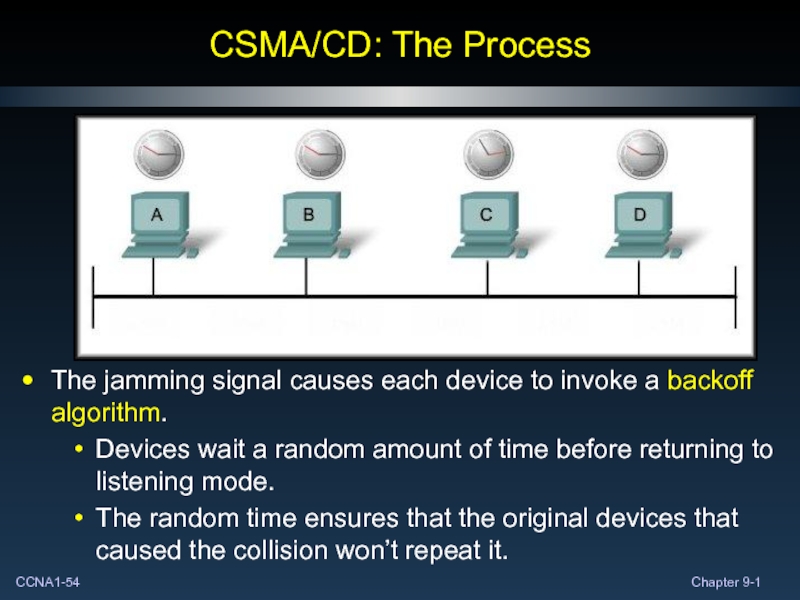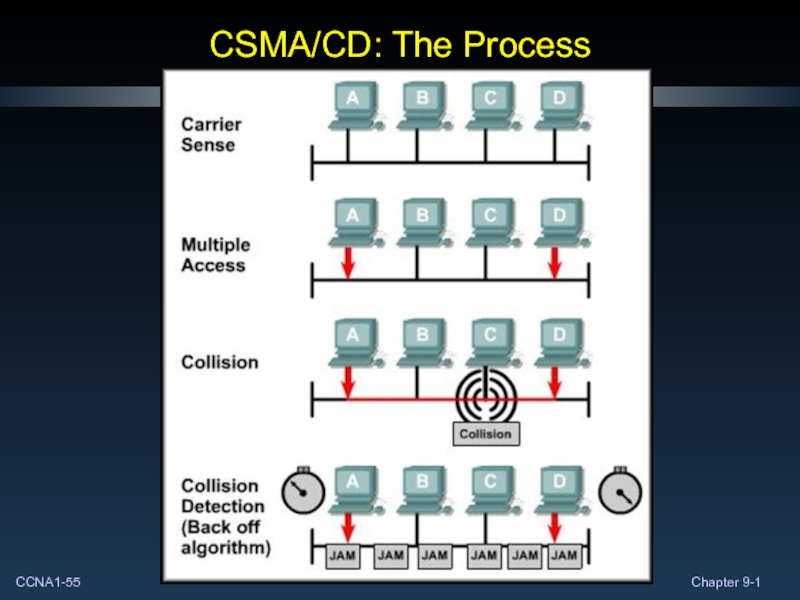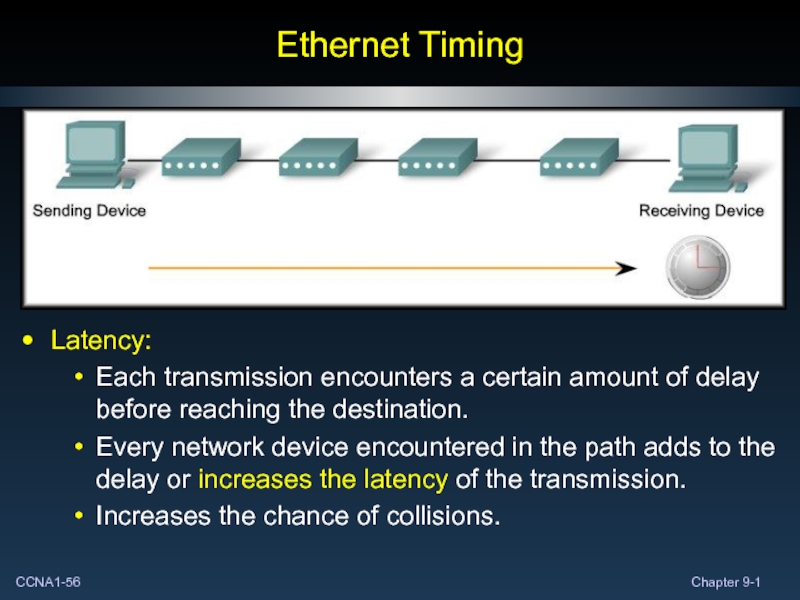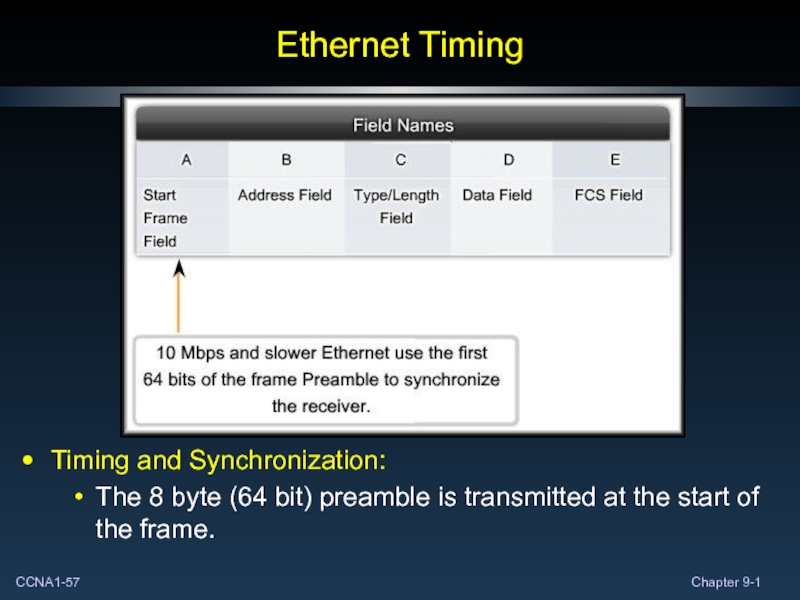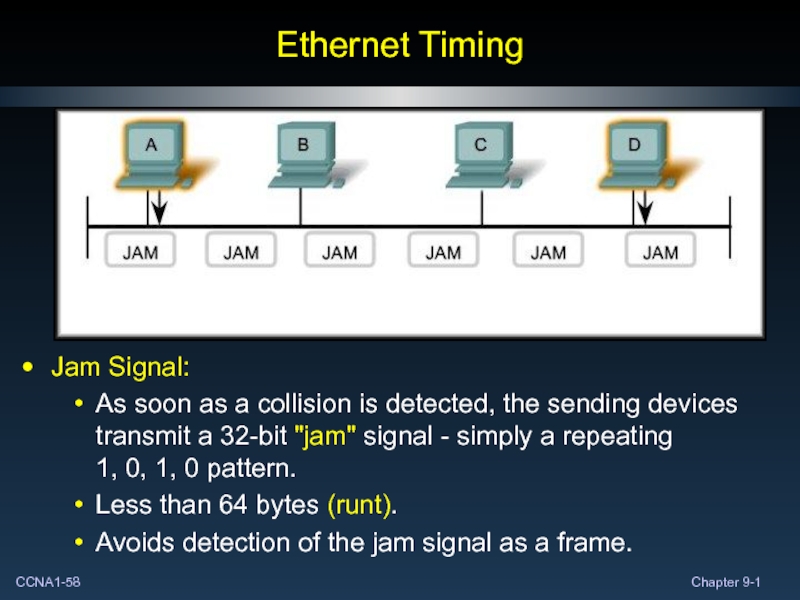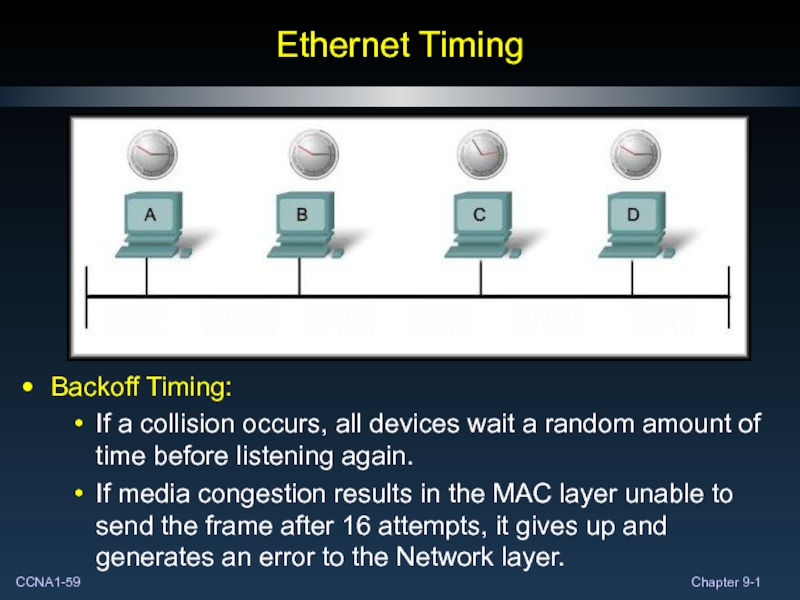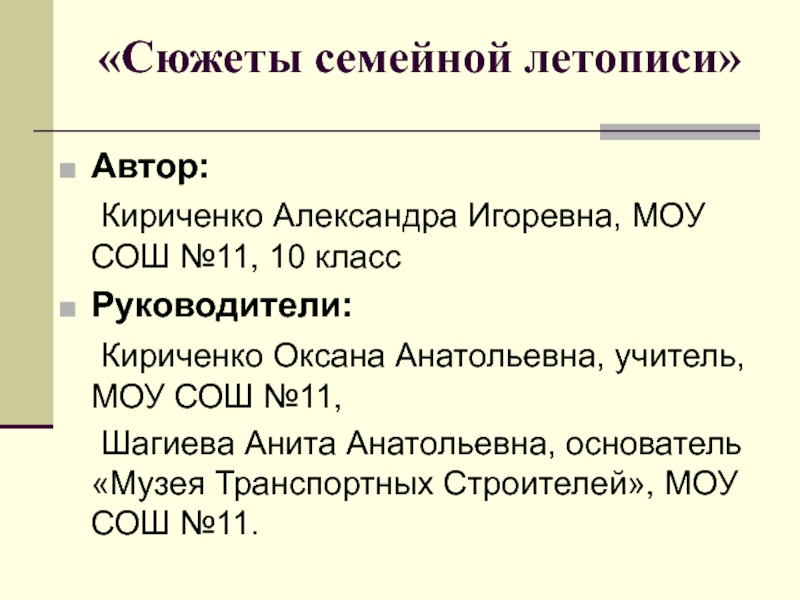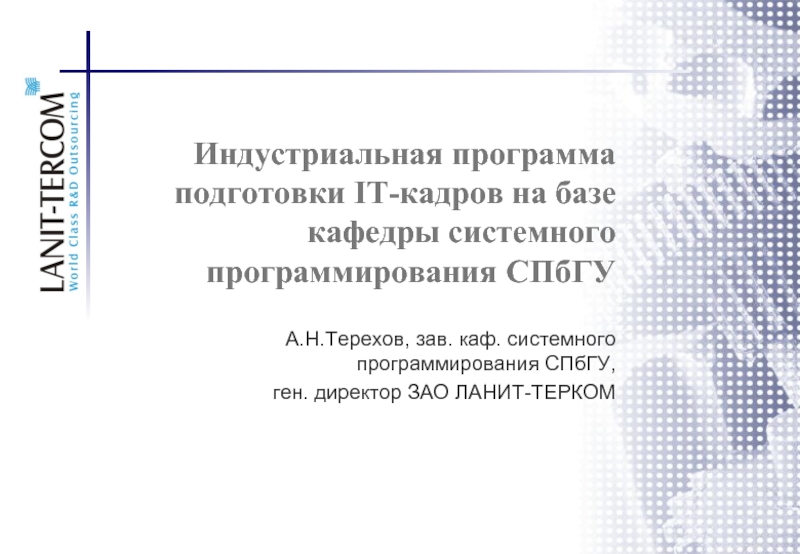- Главная
- Разное
- Дизайн
- Бизнес и предпринимательство
- Аналитика
- Образование
- Развлечения
- Красота и здоровье
- Финансы
- Государство
- Путешествия
- Спорт
- Недвижимость
- Армия
- Графика
- Культурология
- Еда и кулинария
- Лингвистика
- Английский язык
- Астрономия
- Алгебра
- Биология
- География
- Детские презентации
- Информатика
- История
- Литература
- Маркетинг
- Математика
- Медицина
- Менеджмент
- Музыка
- МХК
- Немецкий язык
- ОБЖ
- Обществознание
- Окружающий мир
- Педагогика
- Русский язык
- Технология
- Физика
- Философия
- Химия
- Шаблоны, картинки для презентаций
- Экология
- Экономика
- Юриспруденция
Ethernet. Standards and Implementation. Part I презентация
Содержание
- 1. Ethernet. Standards and Implementation. Part I
- 2. Ethernet Standards and Implementation
- 3. Standards and Implementation The most common LAN
- 4. Standards and Implementation History: First LAN was
- 5. Standards and Implementation 802.3 OSI Model Compatibility:
- 6. Standards and Implementation Layer 2 divided into
- 7. Standards and Implementation Layer 1 limitations were addressed at Layer 2.
- 8. Standards and Implementation Logical Link Control (LLC)
- 9. Standards and Implementation Ethernet 802.3
- 10. Standards and Implementation Logical Link Control (LLC)
- 11. Physical Implementations Most of the traffic on
- 12. Ethernet Communication Through the LAN
- 13. Historical Ethernet CSMA/CD
- 14. Early Media
- 15. Legacy Ethernet Hub Switch
- 16. Legacy Ethernet Hub Half Duplex: One way
- 17. Switch Legacy Ethernet Full Duplex: Two way
- 18. Legacy Ethernet Ethernet with hubs is designed
- 19. Moving to 1 Gbps and Beyond Gigabit
- 20. Moving to 1 Gbps and Beyond Increased
- 21. Ethernet Ethernet Frame
- 22. Encapsulating the Packet The Ethernet protocol defines
- 23. Encapsulating the Packet The IEEE 802.3 Ethernet
- 24. Encapsulating the Packet Preamble and Start of
- 25. Encapsulating the Packet Destination MAC Address –
- 26. Encapsulating the Packet Source MAC Address –
- 27. Encapsulating the Packet Length / Type –
- 28. Encapsulating the Packet Data and Pad –
- 29. Encapsulating the Packet Frame Check Sequence (FCS)–
- 30. Ethernet MAC Address In order for a
- 31. Ethernet MAC Address 48 bits in length.
- 32. Ethernet MAC Address The OUI and the
- 33. Ethernet MAC Address When a network device
- 34. Hexadecimal Numbering and Addressing A big problem
- 35. Hexadecimal Numbering and Addressing The hexadecimal numbering
- 36. Hexadecimal Numbering and Addressing You can expect
- 37. Hexadecimal Numbering and Addressing BIT: 0 and 1 NIBBLE: BYTE: WORD: Binary Data Organization
- 38. Hexadecimal Numbering and Addressing Hexadecimal and Binary:
- 39. Hexadecimal Numbering and Addressing Hexadecimal and Binary:
- 40. Hexadecimal Numbering and Addressing Converting Hexadecimal to
- 41. Hexadecimal Numbering and Addressing Converting Binary to
- 42. Hexadecimal Numbering and Addressing
- 43. Viewing the MAC Address
- 44. Another Layer of Addressing
- 45. Ethernet Unicast, Multicast and Broadcast Different MAC
- 46. Ethernet Unicast, Multicast and Broadcast
- 47. Ethernet Unicast, Multicast and Broadcast
- 48. Ethernet Unicast, Multicast and Broadcast
- 49. Ethernet Ethernet MAC CSMA/CD
- 50. Ethernet MAC method In a shared media
- 51. CSMA/CD: The Process To transmit, each host
- 52. CSMA/CD: The Process It can happen that
- 53. CSMA/CD: The Process Both devices detect the
- 54. CSMA/CD: The Process The jamming signal causes
- 55. CSMA/CD: The Process
- 56. Ethernet Timing Latency: Each transmission encounters a
- 57. Ethernet Timing Timing and Synchronization: The 8
- 58. Ethernet Timing Jam Signal: As soon as
- 59. Ethernet Timing Backoff Timing: If a collision
Слайд 3Standards and Implementation
The most common
LAN technology.
Different media
(copper cable,
optical fibre)
Different bandwidths
(10, 100Mbps
Gigabit,
Same addressing scheme
Same basic frame format
Слайд 4Standards and Implementation
History:
First LAN was Ethernet, designed at Xerox.
1980: First Ethernet
1985: IEEE modified the Ethernet standard and published as 802.3.
Слайд 5Standards and Implementation
802.3 OSI Model Compatibility:
Needs of Layer 1.
The lower portion
Слайд 6Standards and Implementation
Layer 2 divided into two distinct areas of functionality
Logical Link Control (LLC) – 802.2:
To communicate with the Network Layer.
Media Access Control (MAC) – 802.3:
To handle MAC addressing, framing and communication with the Physical Layer.
Слайд 8Standards and Implementation
Logical Link Control (LLC) – 802.2:
Communicates with the upper
Media Access Control (MAC) – 802.3:
Controls access to the media.
Not the only standard that performs the same function.
Слайд 10Standards and Implementation
Logical Link Control (LLC) – 802.2:
Prepares the data for
Allows running multiple network protocols on the same machine. Each protocol is assigned a specific ID.
Implemented mainly in software.
Media Access Control (MAC) - 802.3:
Creates the frame and addresses the frame with the source and destination MAC address.
Checks for any errors using the FCS field.
Controls the assignment of frames on the media.
Controls the recovery of the media due to collisions.
Implemented mainly in hardware.
Слайд 11Physical Implementations
Most of the traffic on the Internet originates and ends
When optical fiber media was introduced, Ethernet adapted to this new technology.
The success of Ethernet is due to the following factors:
Simplicity and ease of maintenance
Ability to incorporate new technologies
Reliability
Low cost of installation and upgrade
Слайд 16Legacy Ethernet
Hub
Half Duplex:
One way traffic.
Necessary on a shared media.
Only one device
Collisions occur.
Слайд 17Switch
Legacy Ethernet
Full Duplex:
Two way traffic.
Not a shared media.
Dedicated switch
connection.
A device can
transmit
No Collisions.
Слайд 18Legacy Ethernet
Ethernet with hubs is designed to work with collisions.
Collisions occur
Managed by CSMA/CD.
As more devices are added, more collisions occur.
As more collisions occur, network performance degrades.
Half Duplex communication.
Ethernet with switches is designed to eliminate collisions.
Each device attached to switch only receives frames destined for that device.
Full Duplex communication.
Слайд 19Moving to 1 Gbps and Beyond
Gigabit Ethernet is used to describe
Built on the full-duplex capability and the UTP and fiber-optic media technologies of earlier Ethernet.
New networking services require high bandwidth LANs.
Does not always mean replacement of existing switches and cables .
Слайд 20Moving to 1 Gbps and Beyond
Increased cabling distances enabled by the
Слайд 22Encapsulating the Packet
The Ethernet protocol defines the frame format.
Adds headers and
Слайд 23Encapsulating the Packet
The IEEE 802.3 Ethernet Frame format:
Minimum Size: 64
Maximum Size: 1518 Bytes
If the frame is less than the minimum or greater than the maximum, it is considered corrupt and will be dropped.
Header
Trailer
Слайд 24Encapsulating the Packet
Preamble and Start of Frame Delimiter (SFD) – 8
Used to synchronize the NIC with the media in preparation for receiving a frame.
Is not considered part of the frame length.
Will not appear in any capture of the frame.
Слайд 25Encapsulating the Packet
Destination MAC Address – 6 bytes:
Identifies the node that
A receiving device compares its MAC address to the contents of this field.
If the addresses match, the frame is accepted.
Also used by switches to determine the interface to be used to forward the frame.
Слайд 26Encapsulating the Packet
Source MAC Address – 6 bytes:
Identifies the node that
Also used by switches to add addresses to their internal Port / MAC address tables.
Слайд 27Encapsulating the Packet
Length / Type – 2 bytes:
DIX used this for
Ethernet II is the frame type used in TCP/IP networks.
If the value is greater than 1518 (0x600), it contains a code identifying the encapsulated upper layer protocol.
Any other value defines the length of the frame.
Слайд 28Encapsulating the Packet
Data and Pad – 46 to 1500 bytes:
The encapsulated
Most commonly an IPv4 packet.
If the total frame length is less than 64 bytes, the field is padded to the right with enough null characters to meet the minimum frame length.
Слайд 29Encapsulating the Packet
Frame Check Sequence (FCS)– 4 bytes:
Used to detect errors
The result of a Cyclic Redundancy Check (CRC) is placed in the frame by the sending node.
The receiving node performs the same CRC and compares the values….they should be equal.
Слайд 30Ethernet MAC Address
In order for a transmission to be received properly
A unique address is permanently programmed into ROM in each NIC ("burned in“ ) when it is manufactured.
Because of this, the MAC Address is often referred to as the burned in (BIA) address or physical address of a machine.
Слайд 31Ethernet MAC Address
48 bits in length.
Expressed as
12 hexadecimal
digits.
The first 6
The remaining 6 hexadecimal digits comprise the interface serial number, or another value administered by the specific vendor.
Слайд 32Ethernet MAC Address
The OUI and the sequential number ensure that the
You will see them expressed in different ways.
Cisco MAC Address
00-60-2F-3A-07-BC
00:60:2F:3A:07:BC
0060.2F3A.07BC
Intel MAC Address
00-20-E0-6B-17-62
00:20:E0:6B:17:62
0020.E06B.1762
Слайд 33Ethernet MAC Address
When a network device matches the destination address to
The MAC address is essential to communications on a network. It is the only address that guarantees that the message will be accepted by the destination.
Слайд 34Hexadecimal Numbering and Addressing
A big problem with the binary system was
Requires 3 decimal digits (202).
Requires 8 bits (11001010).
When representing large numbers, the binary system quickly becomes unwieldy.
We can also convert from decimal to binary but the conversion is not a trivial task.
Слайд 35Hexadecimal Numbering and Addressing
The hexadecimal numbering system addresses both of these
It is compact.
It easy to convert from binary to hexadecimal and vice versa.
Because of this most of the computers in use today use the hexadecimal system.
Слайд 36Hexadecimal Numbering and Addressing
You can expect to see hex numbers represented
23A916 2eb6H 0FCDh ‘7b’
0xE0 0x23facb92 %0a000c834a >34ce
10-00-5a-29-16-ab (NIC – e.g. ipconfig –all)
00:00:0C:48:8C:11 (NIC – e.g. router MAC display
#FFFFFF (Web RGB Colour Code)
1080:0:0:0:8:800:200C:417A (IP Version 6 Address)
Слайд 38Hexadecimal Numbering and Addressing
Hexadecimal and Binary:
Hexadecimal numbering is base 16 and
Each hexadecimal digit is represented in binary by one nibble (4 bits).
Слайд 39Hexadecimal Numbering and Addressing
Hexadecimal and Binary:
A byte is 8 bits (2
Each byte is represented by a group of 2 hexadecimal digits and each word by a group of 4 digits.
e.g. 0x1234, 0xBEEF, 0xDEAF, 0xDEAD, 0xFEED
Bytes are usually, but not always, separated by a colon (:), a dash (–) or a space.
0x12:34 0xBE-EF 0xDE AF
Слайд 40Hexadecimal Numbering and Addressing
Converting Hexadecimal to Binary:
Convert 0xCA to Binary…….
Convert each
C = 1100 (12) A = 1010 (10)
Combine the nibbles in the same sequence to form the complete byte.
11001010
0xCA = 11001010 = 202
Слайд 41Hexadecimal Numbering and Addressing
Converting Binary to Hexadecimal:
Convert 11001010 to Hexadecimal…..
Beginning at
1100 1010
Convert each nibble to its hexadecimal equivalent.
1100 = 12 = C 1010 = 10 = A
11001010 = 0xCA
Слайд 45Ethernet Unicast, Multicast and Broadcast
Different MAC addresses are used to provide
Unicast:
A unique address identifying a specific host.
Multicast:
An address recognized by a specific group of hosts.
Broadcast:
An address used to send information to all hosts.
Слайд 50Ethernet MAC method
In a shared media environment, all devices have guaranteed
If more than one device transmits simultaneously
The physical signals collide.
The network must recover.
Collisions are the cost that Ethernet pays to get the low overhead associated with each transmission.
Ethernet uses Carrier Sense Multiple Access with Collision Detection (CSMA/CD) to detect and handle collisions and manage the resumption of communications.
Слайд 51CSMA/CD: The Process
To transmit, each host will listen on the media.
If
If no signal is present, it will transmit.
Слайд 52CSMA/CD: The Process
It can happen that two devices will determine that
In that case, both will transmit their frame.
Слайд 53CSMA/CD: The Process
Both devices detect the collision and send out a
The jamming signal is detected by all devices and all devices now know that a collision has occurred on the network.
Слайд 54CSMA/CD: The Process
The jamming signal causes each device to invoke a
Devices wait a random amount of time before returning to listening mode.
The random time ensures that the original devices that caused the collision won’t repeat it.
Слайд 56Ethernet Timing
Latency:
Each transmission encounters a certain amount of delay before reaching
Every network device encountered in the path adds to the delay or increases the latency of the transmission.
Increases the chance of collisions.
Слайд 57Ethernet Timing
Timing and Synchronization:
The 8 byte (64 bit) preamble is transmitted
Слайд 58Ethernet Timing
Jam Signal:
As soon as a collision is detected, the sending
Less than 64 bytes (runt).
Avoids detection of the jam signal as a frame.
Слайд 59Ethernet Timing
Backoff Timing:
If a collision occurs, all devices wait a random
If media congestion results in the MAC layer unable to send the frame after 16 attempts, it gives up and generates an error to the Network layer.
